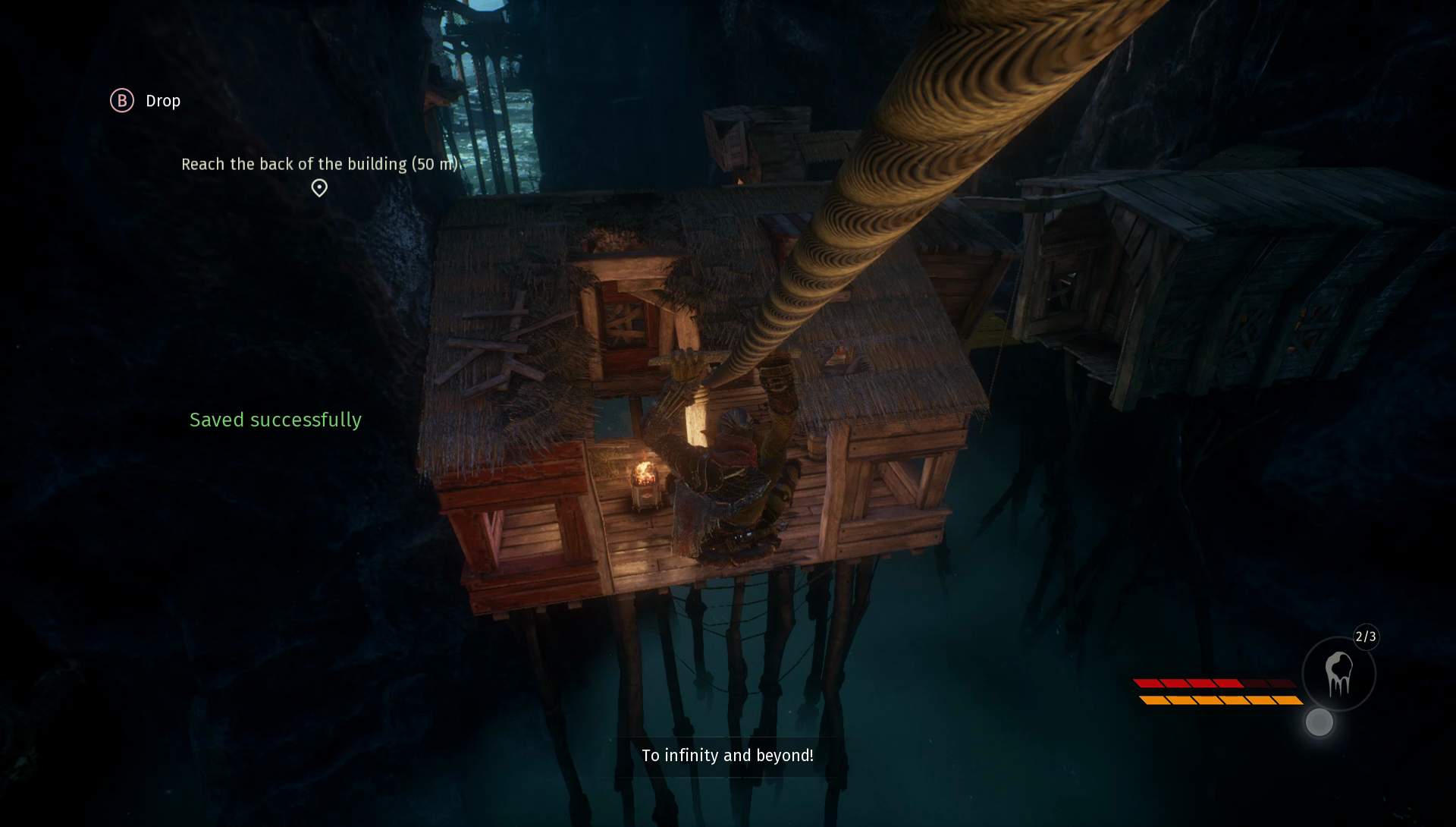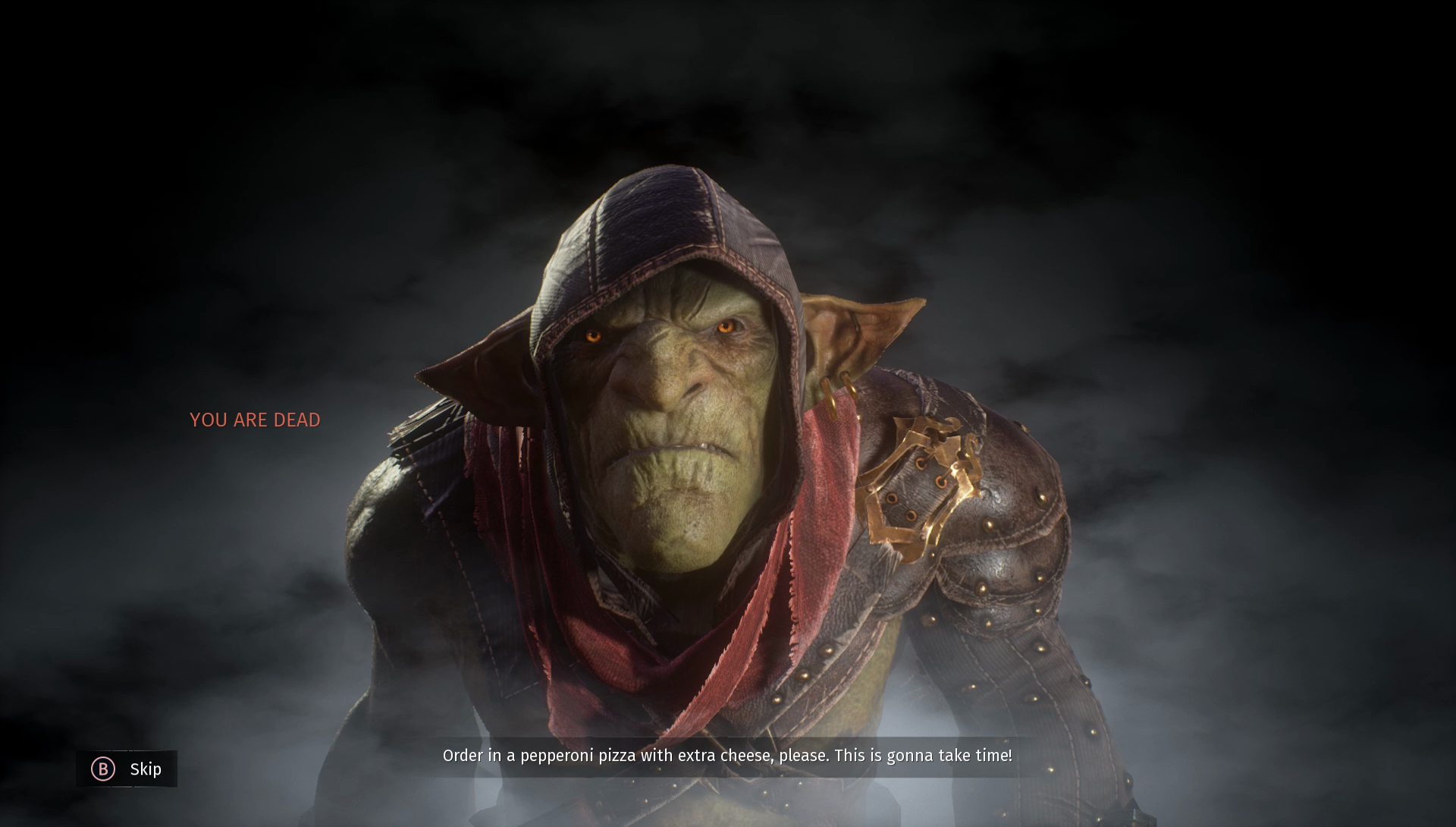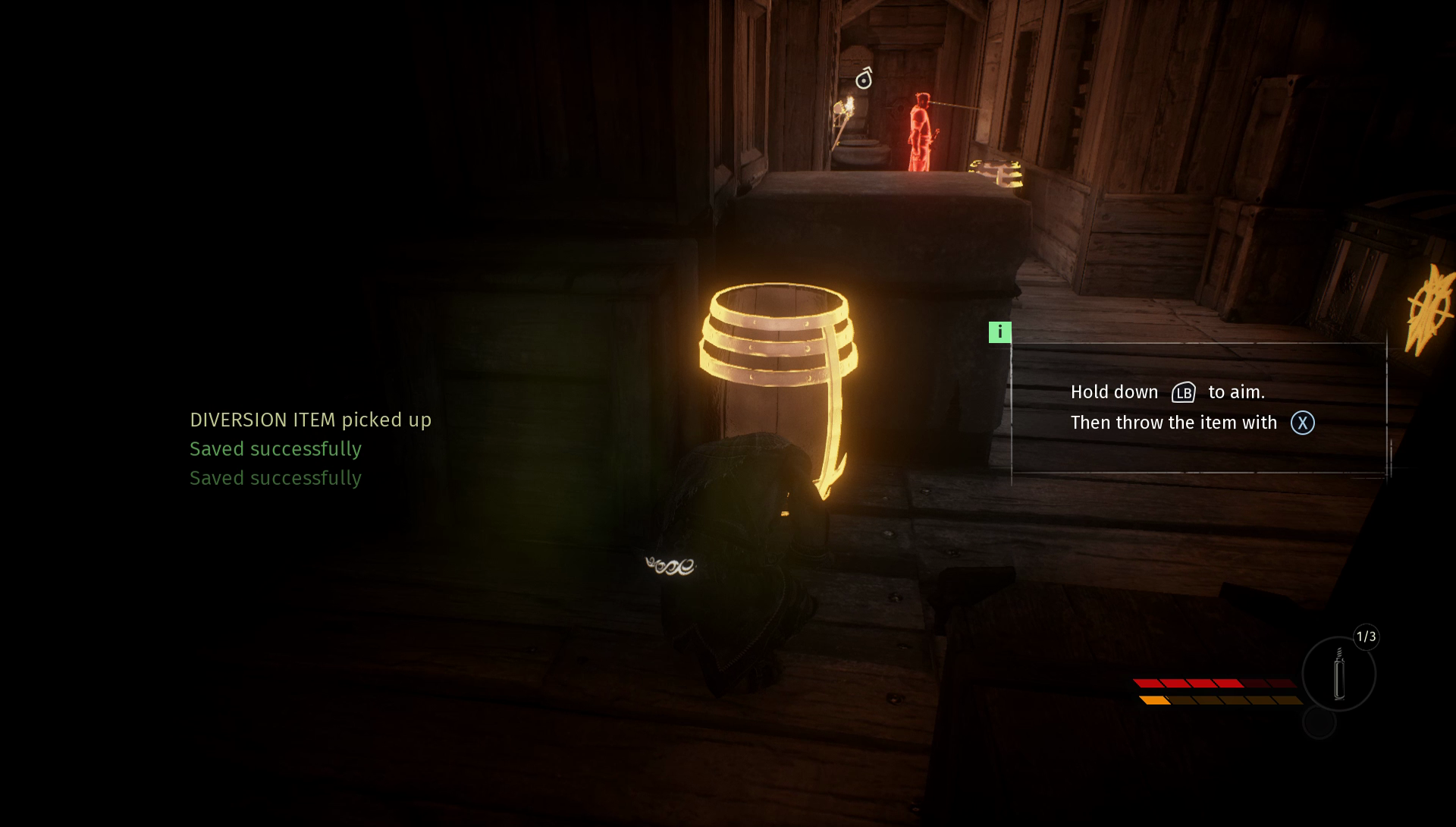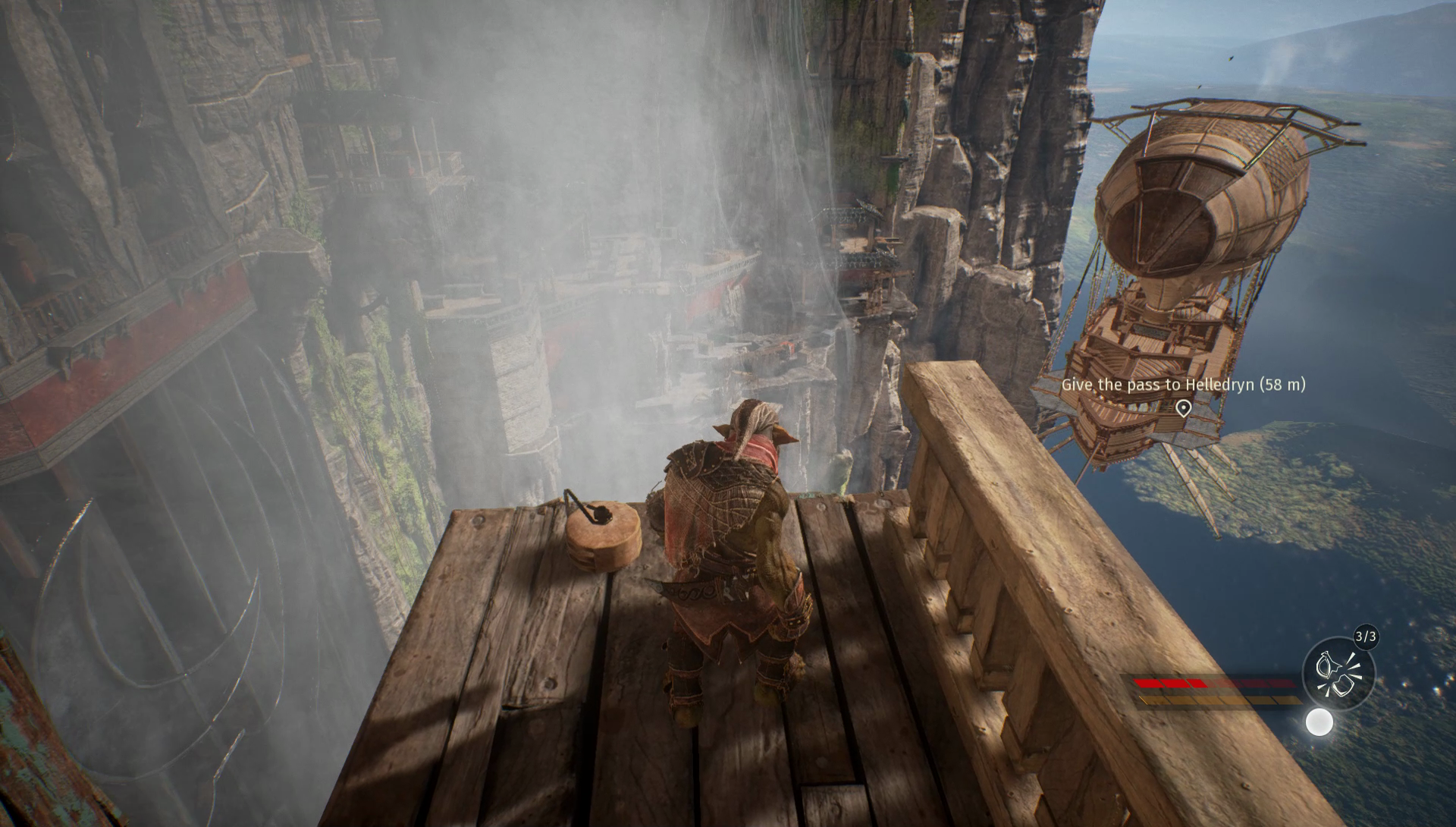Review | Styx: Shards of Darkness
Styx has got a lot going for him really, he’s over 200 years old, the only goblin intelligent enough to speak, likely the only surviving clone of the first goblin, a survivor of two previous games, and he’s a master of stealth, sarcasm, and breaking the fourth wall.

Stealth in games is a strange beast, although one which is starting to be implemented in games a lot better of late; yet for the most part it still falls into either a Boolean switch, with everyone aware, or not, of the player character’s operations in the area; an enforced ‘you are spotted, you fail’ section; or the -thankfully- increasingly popular ‘spreading awareness’ where enemies must inform one-another of your presence, and are only aware of your location while line of sight is maintained.
Styx is most definitely of the latter, although there are one or two moments where you hit a fail-state if you are spotted, thankfully these are fleeting, and the areas of the map that they exist within are -generally- exceptionally open plan.
The universe the game is set within is a chaotic one, with greenskins -orcs & goblins, fondly known as The Green Plague– actively being hunted by the other races; elves, dwarves, and humans. The average goblin’s intellect is slightly higher than that of a rat, but that combined with their size (think Left 4 Dead’s tank, shrunk down to a child’s size) they’ve made a right tip of the human empire; and that’s caused a further faction -C.A.R.N.A.G.E- to form up. Which is where the game starts.

Where Of Orcs and Men’s story -the first outing for Styx, although the last chronologically- followed the twisting-and-turning expected what with the game’s plot centered around ending a war through an attempt to topple an empire, 2014’s Masters of Shadow was a steady paced plod through -predominantly- dungeons, with a focus on stealth enforced by an awkward combat system, and decent level verticality.
Shards of Darkness builds on Masters of Shadow in practically every way. For a start combat -while still best avoided- has been replaced with a simple parry system, if you hit the parry button in time then you stun the enemy, if you fail then they hit you – in Goblin mode this is fatal. The streamlining of this system does several things, for a start it means you can disengage when you wish (rather than being locked in a weird fight sequence), it serves as a quicker execution of odds, and it serves to reinforce the fact that, frankly, you shouldn’t really be dicking around in melee combat in the first place.
That alternative to combat then, comes in hiding under desks, in barrels, in wardrobes; in crawling through broken fences, clambering through windows, and negotiating crawlspaces. There’s also a fair deal of running along beams, scaling walls & roofs, and general tomfoolery to be done. Most importantly though, a major addition comes in the fact that you can actually climb, zipline, and swing from ropes – something that, for some reason, you couldn’t do in the first game.

The first few levels set a precedent for the game; the city of Thoben is interconnected with ropes and rooftops aplenty; the airships you leave town on are linked with rigging, and covered from top-to-bottom in scale-able surfaces; Körangar’s port, the access point to the city of Dark Elves, stretches up a jagged cliff edge, balloons and ships floating in their moorings. For all of the surfaces you scaled in the first game, it feels like nothing compared to even one of these levels – they’re wide, far stretching, and they all manage to feel more detailed (possibly due to the switch to the Unreal engine) than most moments in MoS.
The skills that Styx unlocks in the first game are -refreshingly- already mostly unlocked for the character in his new outing; there’s instead a mass of new abilities and skills to unlock, each laid out in their own skill trees with ascending costs towards more specialised, powerful skills. Unfortunately this does encourage players to focus heavily down set trees, or return to earlier levels to milk them of bonus points through relics, optional objectives and attempting to best times, passivity, and stealth routes. While not too bad an ask, I did suffer at the hands of this due to time constraints in getting the review out – not that this will affect people who are not working to a deadline. There is a danger, however, in some players getting stuck and frustrated as new enemies, and obstacles, appear as the game goes on; although good level design does mean that there’s rarely just one way to an objective.
The writing, and story, is also very good; although Styx is certainly rude, and at times offensive, and so some people might take umbrage to some of his cracks. There are frequently jibes at other stealth characters, with direct references to Thief, Dishonoured & Assassin’s Creed protagonists within the first few levels, and a notable change to the Game Over screen sees Styx break the fourth wall to call you out for your mistakes, or just crack wise. The story, too, is improved; with a lot of espionage tropes at play with shape-shifting enemies, and side-swapping villains and rivals, as well as dramatically overblown baddies in the Dark Elves. Sure, Styx is no Bond; but his quips, jibes, rapidly-changing list of allies & enemies, and various gadgets certainly puts him somewhere on the spy spectrum.

I say gadgets, the core abilities of the blighter are the same; whistling, gobbing out clones, throwing daggers. The main differences are that there are further enhancements to abilities – longer periods of invisibility, the ability to spawn a clone further afield, the chance to hurl objects further. Crafting is also added to the game, and while certainly not necessary to complete the game (you find the items you can make littered around levels only slightly less frequently than you find ingredients) it is nice to be able to backtrack, make some daggers, and solve your problem from range rather than taking a tougher route.
One thing that I did find particularly strange about the game, and this persists from the previous title, is unrestricted, unguided jumping. Every level toys with drops and height at various points, and yet the game is still relying on a classic 3D-Platformer style free-jumping system where a key-press triggers the jump, and you steer the landing. While there’s only a few places where the jumps are so tight that it causes problems, and the camera is very obedient, sometimes it is a bit easy to tumble to your death. There’s also some strange behaviours that take place while you are on certain grip-points; which when you are on you do have directed jumping (Lean and jump, etc). Some of them simply have you lean out, and should you jump, tumble into the abyss. Similar happens on several corners of ambling ledges, where if you are hanging the character will simply look around the corner rather than change direction. It’s a bit strange, especially considering the rest of the climbing sections in the game are great.
The hit-detection of the game’s climbing is fantastic in general, and I don’t think there was a point where the character failed to animate & grip onto a surface when I moved to touch it – I was actually caught off-guard a couple of times when a jump was interrupted by the character locking onto a plateau I’d not seen as one.

Finally, the game also introduces a co-operative mode for the story. It’s an interesting, and much-requested, addition to the game, and strangely features zero handicaps or difficulty shifts in the campaign; what it instead does is, by allowing another human into the game, open up the likelihood of human error, although it will more than likely also allow for some outstanding moments of synchronised assassination.
Fans of Styx: Master of Shadow, or the Thief series, would do themselves no harm in picking this up, and those who have the patience and self-control to stealth your way through games -or run away really fast and hide- should also heavily consider picking it up; it’s pretty, it’s full of personality, and it’s got a solid 12-15 hours of content in it, with ample replayability before you even get to the fun/chaos of co-operative play.

Comments are closed.